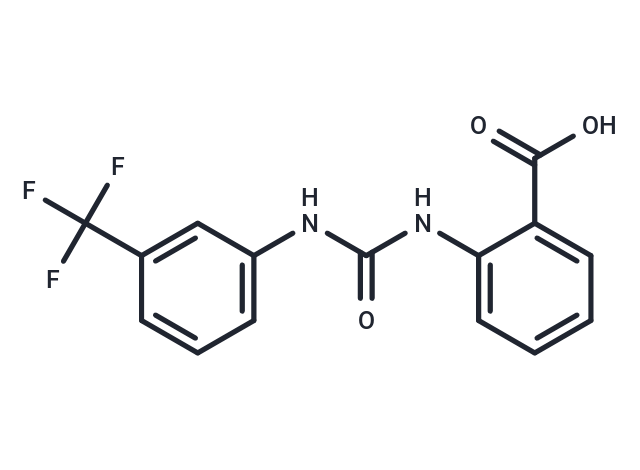Shopping Cart
- Remove All
 Your shopping cart is currently empty
Your shopping cart is currently empty

NS1652 is an anion conductance inhibitor. NS1652 blocks chloride channel has an IC50 of 1.6 μM in human and mouse red blood cells.

| Pack Size | Price | Availability | Quantity |
|---|---|---|---|
| 1 mg | $80 | In Stock | |
| 5 mg | $178 | In Stock | |
| 10 mg | $288 | In Stock | |
| 25 mg | $539 | In Stock | |
| 50 mg | $778 | In Stock | |
| 100 mg | $1,060 | In Stock | |
| 500 mg | $2,120 | In Stock |
| Description | NS1652 is an anion conductance inhibitor. NS1652 blocks chloride channel has an IC50 of 1.6 μM in human and mouse red blood cells. |
| Targets&IC50 | Cl- channel (human and mouse red blood cells):1.6 μM (IC50) |
| In vitro | NS1652 (20 μM) fully and reversibly inhibits the red cell Cl-conductance. NS1652 effectively inhibits the chloride conductance (IC50, 1.6 μM) in human and mouse red blood cells, but only weakly inhibits VRAC (IC50, 125 μM) in HEK293 cells. NS1652 markedly blocks the NO production (IC50: 3.1 μM in BV2 cells). NS1652 also down-regulates iNOS expression at 3 μM and fully abolishes at 10 μM in BV2 cells. NS1652 (0, 1.0, 3.3, 10, and 20 μM) induces increasing hyperpolarization due to inhibition of the chloride conductance in normal erythrocytes. NS1652 lowers the net KCl loss from deoxygenated sickle cells from about 12 mM cells/h to about 4 mM cells/h [1][2]. |
| In vivo | In mice, NS1652 (50 mg/kg, i.v.) blocks murine erythrocyte Cl- conductance by >90%[2]. |
| Molecular Weight | 324.25 |
| Formula | C15H11F3N2O3 |
| Cas No. | 1566-81-0 |
| Smiles | OC(=O)c1ccccc1NC(=O)Nc1cccc(c1)C(F)(F)F |
| Relative Density. | 1.501 g/cm3 (Predicted) |
| Storage | Powder: -20°C for 3 years | In solvent: -80°C for 1 year | Shipping with blue ice. | ||||||||||||||||||||
| Solubility Information | DMSO: 4.9 mg/mL (15.11 mM), Sonication is recommended. | ||||||||||||||||||||
Solution Preparation Table | |||||||||||||||||||||
DMSO
| |||||||||||||||||||||

Copyright © 2015-2025 TargetMol Chemicals Inc. All Rights Reserved.